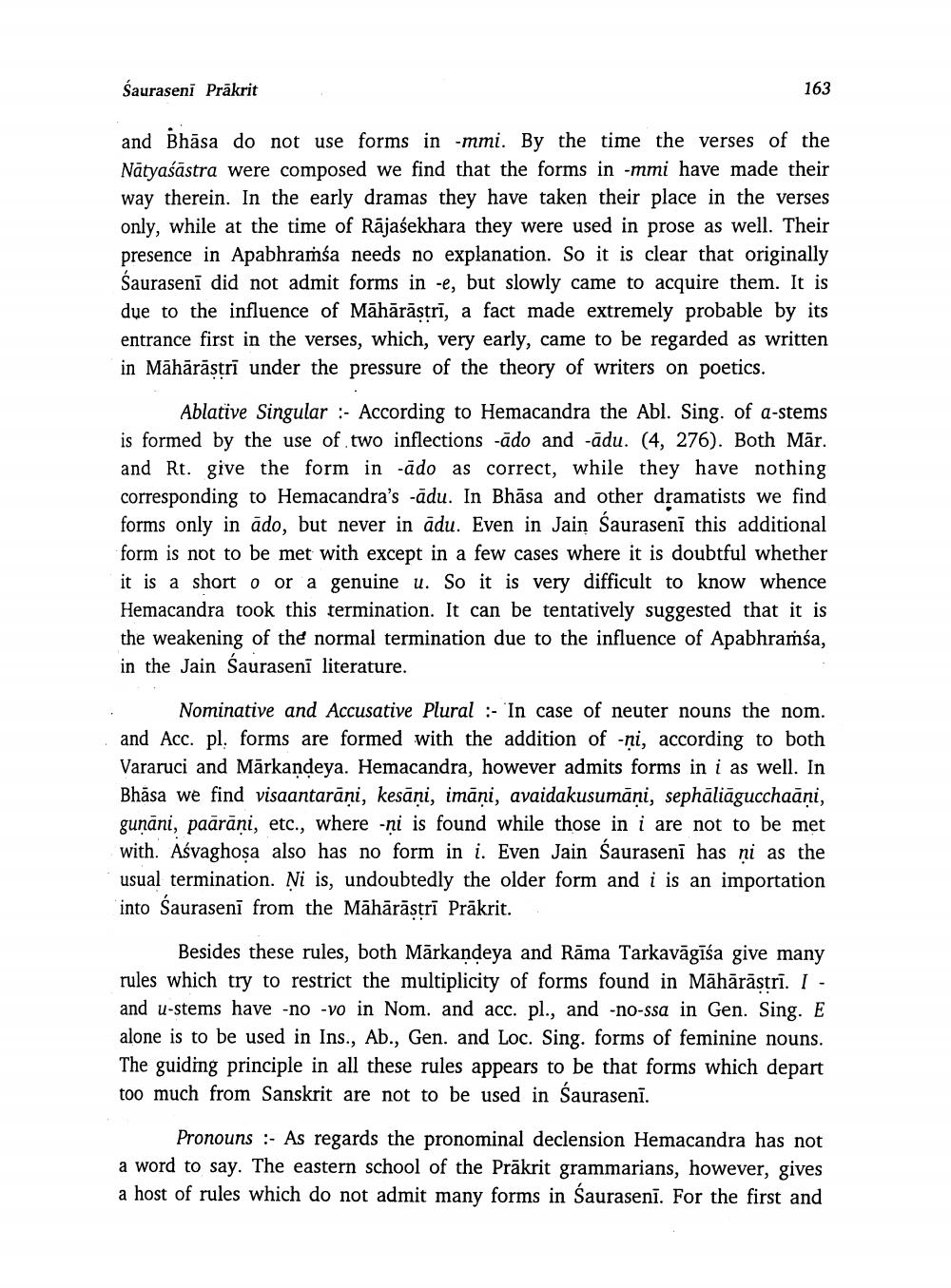________________
Sauraseni Prākrit
163
and Bhāsa do not use forms in mmi. By the time the verses of the Nātyaśāstra were composed we find that the forms in -mmi have made their way therein. In the early dramas they have taken their place in the verses only, while at the time of Rājasekhara they were used in prose as well. Their presence in Apabhraíśa needs no explanation. So it is clear that originally Saurasenī did not admit forms in -e, but slowly came to acquire them. It is due to the influence of Māhārāstrī, a fact made extremely probable by its entrance first in the verses, which, very early, came to be regarded as written in Māhārāstrī under the pressure of the theory of writers on poetics.
Ablative Singular :- According to Hemacandra the Abl. Sing. of a-stems is formed by the use of two inflections -ado and -ādu. (4, 276). Both Mār. and Rt. give the form in -ādo as correct, while they have nothing corresponding to Hemacandra's -ādu. In Bhāsa and other dramatists we find forms only in ado, but never in adu. Even in Jain Sauraseni this additional form is not to be met with except in a few cases where it is doubtful whether it is a short o or a genuine u. So it is very difficult to know whence Hemacandra took this termination. It can be tentatively suggested that it is the weakening of the normal termination due to the influence of Apabhramsa, in the Jain Saurasenī literature.
Nominative and Accusative Plural :- 'In case of neuter nouns the nom. and Acc. pl. forms are formed with the addition of -ni, according to both Vararuci and Mārkandeya. Hemacandra, however admits forms in i as well. In Bhāsa we find visaantarāņi, kesāņi, imāņi, avaidakusumāni, sephāliāgucchaāni, gunāni, paārāni, etc., where -ni is found while those in i are not to be met with. Ašvaghosa also has no form in i. Even Jain Sauraseni has ni as the usual termination. Ni is, undoubtedly the older form and i is an importation into Saurasenī from the Māhārāstrī Prākrit.
Besides these rules, both Mārkandeya and Rāma Tarkavāgīša give many rules which try to restrict the multiplicity of forms found in Māhārāstrī. I - and u-stems have -no -vo in Nom. and acc. pl., and -no-ssa in Gen. Sing. alone is to be used in Ins., Ab., Gen. and Loc. Sing, forms of feminine nouns. The guiding principle in all these rules appears to be that forms which depart too much from Sanskrit are not to be used in Saurasenī.
Pronouns :- As regards the pronominal declension Hemacandra has not a word to say. The eastern school of the Prākrit grammarians, however, gives a host of rules which do not admit many forms in Saurasenī. For the first and




